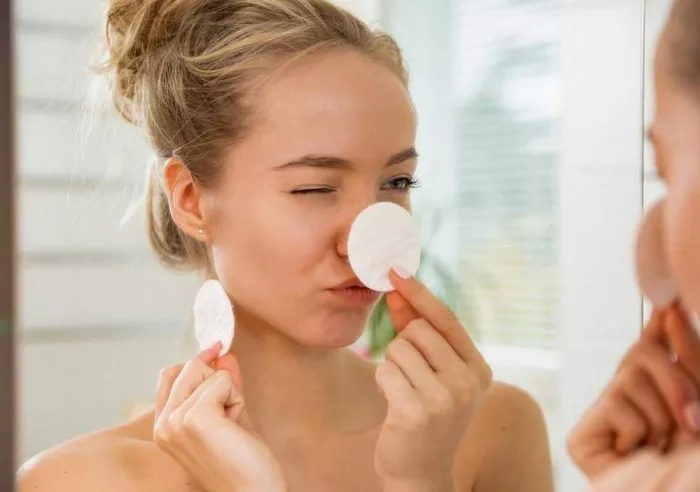Creating a personalized skincare routine is essential for maintaining healthy, glowing skin. With countless products and advice available, it can be overwhelming to know where to start. This article will guide you through 6 simple steps to develop an effective skincare routine tailored to your specific needs.
Understanding Your Skin Type
Identifying Your Skin Type
Before creating a skincare routine, it’s crucial to understand your skin type. Skin types generally fall into five categories:
Normal: Balanced skin with minimal imperfections.
Oily: Shiny, greasy skin with larger pores.
Dry: Flaky, rough skin with smaller pores.
Combination: A mix of oily and dry areas, usually with an oily T-zone.
Sensitive: Easily irritated skin, prone to redness and reactions.
Conducting a Skin Test
To determine your skin type, wash your face with a gentle cleanser and wait for an hour without applying any products. Observe your skin:
Normal skin feels comfortable, not too oily or dry.
Oily skin appears shiny, especially on the forehead, nose, and chin.
Dry skin feels tight or rough.
Combination skin has an oily T-zone but feels normal or dry on the cheeks.
Sensitive skin shows signs of redness or irritation.
Choosing the Right Cleanser
Importance of Cleansing
Cleansing is the foundation of any skincare routine. It removes dirt, oil, and impurities that can clog pores and cause breakouts. The right cleanser will leave your skin feeling clean but not stripped of its natural oils.
Selecting a Cleanser for Your Skin Type
Normal Skin: Use a gentle, non-foaming cleanser.
Oily Skin: Opt for a foaming or gel cleanser to control oil production.
Dry Skin: Choose a hydrating cleanser with moisturizing ingredients like glycerin or hyaluronic acid.
Combination Skin: Use a gentle cleanser that balances oil without over-drying.
Sensitive Skin: Select a fragrance-free, hypoallergenic cleanser.
See Also: 6 Situations in Which You Should Stop Using Skin Care Products
Incorporating Toner
Benefits of Toner
Toner helps remove any residual dirt and makeup left after cleansing, restores your skin’s pH balance, and prepares your skin to absorb subsequent products more effectively.
Choosing a Toner for Your Skin Type
Normal Skin: Use a hydrating toner with soothing ingredients like rose water or chamomile.
Oily Skin: Opt for an astringent toner with ingredients like witch hazel or salicylic acid to control oil and minimize pores.
Dry Skin: Choose a hydrating toner with ingredients like glycerin or hyaluronic acid.
Combination Skin: Select a balancing toner that targets oily and dry areas.
Sensitive Skin: Use an alcohol-free toner with calming ingredients like aloe vera or calendula.
Applying Serum
Why Use a Serum?
Serums are concentrated formulations designed to target specific skin concerns, such as wrinkles, dark spots, or dehydration. They contain active ingredients that penetrate deeper into the skin.
Choosing a Serum for Your Skin Type
Normal Skin: Use a vitamin C serum for overall skin health and brightness.
Oily Skin: Opt for a serum with salicylic acid or niacinamide to control oil and reduce pores.
Dry Skin: Choose a hydrating serum with hyaluronic acid or peptides.
Combination Skin: Use a serum that balances hydration and oil control, like one with niacinamide.
Sensitive Skin: Select a serum with calming ingredients like aloe vera or chamomile.
Moisturizing
Importance of Moisturizing
Moisturizing helps maintain your skin’s moisture barrier, keeping it hydrated and protected from environmental damage. Even oily skin needs hydration to balance oil production.
Selecting a Moisturizer for Your Skin Type
Normal Skin: Use a lightweight, hydrating moisturizer.
Oily Skin: Choose an oil-free, non-comedogenic gel moisturizer.
Dry Skin: Opt for a rich, creamy moisturizer with ingredients like shea butter or ceramides.
Combination Skin: Use a lightweight moisturizer that hydrates without adding excess oil.
Sensitive Skin: Select a fragrance-free, hypoallergenic moisturizer with soothing ingredients.
Sun Protection
Why SPF is Essential
Sunscreen is crucial in any skincare routine to protect against harmful UV rays that cause premature aging, hyperpigmentation, and skin cancer.
Choosing a Sunscreen
Normal Skin: Use a broad-spectrum SPF 30 or higher.
Oily Skin: Opt for a mattifying, oil-free sunscreen.
Dry Skin: Choose a hydrating sunscreen with added moisturizers.
Combination Skin: Use a lightweight, non-greasy sunscreen.
Sensitive Skin: Select a mineral-based sunscreen with zinc oxide or titanium dioxide.
Additional Tips for a Successful Skincare Routine
Consistency is Key
A consistent skincare routine is essential for achieving and maintaining healthy skin. Follow your routine daily, both morning and night, to see the best results.
Listening to Your Skin
Pay attention to how your skin responds to different products. If you experience irritation or breakouts, adjust your routine accordingly.
Adjusting for Seasons
Your skin’s needs may change with the seasons. For example, you might need a richer moisturizer in the winter and a lighter one in the summer.
Hydration and Diet
Healthy skin also comes from within. Drink plenty of water and maintain a balanced diet rich in vitamins and antioxidants.
Avoiding Overuse of Products
Using too many products can overwhelm your skin and cause irritation. Stick to the basics and introduce new products gradually.
Consulting a Dermatologist
If you have persistent skin concerns or are unsure about which products to use, consult a dermatologist for personalized advice.
Conclusion
Creating your own skincare routine doesn’t have to be complicated. By understanding your skin type and choosing the right products, you can develop a routine that keeps your skin healthy and radiant. Remember to be consistent, listen to your skin, and make adjustments as needed. With these six steps, you’re on your way to achieving your best skin ever.
Related topics:

